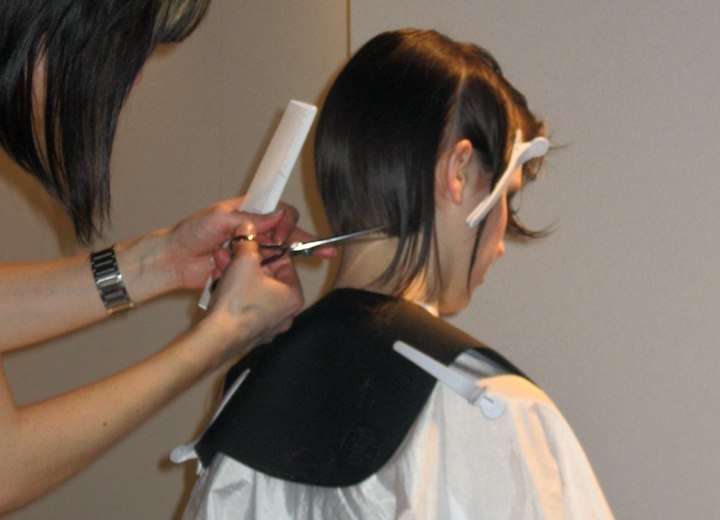Washing & Tonsuring

Q: Why does my stylist wash my hair before tonsuring it?
A: There are several important reasons why stylists typically shampoo your hair before cutting, and it goes beyond just providing a relaxing salon experience.
Hygiene and Safety
First and foremost, washing the hair ensures that both the hair and scalp are thoroughly clean before any cutting begins. It removes any buildup of styling products, grease or dirt that may have accumulated. While infection control isn't the primary concern, maintaining proper sanitation standards is always good practice. A clean working environment reduces the minimal risk of any transmissible pathogens.
The most significant reason for pre-cutting shampoo is purely technical. Wet hair behaves very differently from dry hair, and these differences make it much easier for your stylist to achieve precise, even results. When hair is wet, individual strands naturally clump together, creating cleaner sections that are easier to manage and cut. This clumping effect allows your stylist to establish better cutting guides and maintain consistent lengths throughout the haircut.
Wet hair also lies flatter against the head, making it easier to see the natural growth patterns, cowlicks, and the overall shape of your head. This is crucial information that helps your stylist determine the best approach for your particular hair type and desired style.
Many advanced cutting methods, such as point cutting and slide cutting work best on damp hair. The moisture helps the scissors or razor glide more smoothly through the hair, reducing the risk of snagging or creating uneven, choppy results.
Preventing Irritation and Discomfort
Another benefit of cutting wet hair is that it significantly reduces the amount of loose hair that falls and scatters during the cutting process. When hair is dry, the cut pieces tend to fly around and can find their way down your shirt or onto your skin, causing itching and irritation that can last well after you leave the salon. Wet hair, being heavier and more cohesive, tends to fall more predictably and is less likely to become trapped in your clothing.
This becomes even more important when your stylist is using razor cutting. Razor cutting creates hair ends that are cut at sharp angles, making them more pointed and potentially more irritating to the skin. When these sharply angled ends are wet, they're less likely to poke and prick your skin.
The Salon Experience
Finally, the shampooing helps you relax and settle into the salon experience while giving your stylist time to assess your hair's condition, texture, and any specific challenges they might encounter during the cutting process. This assessment time is valuable for planning the best approach to achieve your desired look.
©Hairfinder.com
See also:
Is it safe to cut the hair when it is dry?
Should you not brush hair when wet?